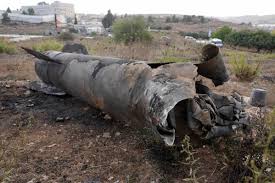The recent missile attack launched by Iran against Israel has brought the simmering tensions in the Middle East to a boiling point. This unprecedented assault, resulting in an estimated $53 million in damages, marks a significant escalation in the ongoing regional conflict. The missile attack not only demonstrates Iran’s military capabilities but also underscores the fragile nature of peace in the region, raising concerns about the potential for a wider conflagration.
The Scale and Impact of the Attack
On October 1, 2024, Iran unleashed a barrage of approximately 180 missiles targeting various locations in Israel. According to reports from Israeli media, citing property tax data, the attack caused damage estimated between 150 to 200 million shekels ($40 to $53 million). This makes it the most destructive single missile attack on Israel since the outbreak of the Gaza war in October 2023.
The assault affected around 10 locations, including several military bases, showcasing the precision and reach of Iran’s missile technology. While Israel reported no injuries within its borders, tragically, a Palestinian near the West Bank city of Jericho lost their life after being struck by shrapnel from an interceptor missile. This collateral damage highlights the complex and often unpredictable nature of modern warfare in densely populated regions.
Regional Tensions and Retaliatory Actions
Iran’s justification for the attack stems from recent events that have further destabilized the region. The missile strike was reportedly in retaliation for the assassinations of prominent figures in the resistance axis, including Hamas leader Ismail Haniyeh, Hezbollah chief Hassan Nasrallah, and an Iranian Revolutionary Guards commander. These high-profile killings have significantly raised the stakes in the ongoing conflict, pushing Iran to respond with force.
Israel’s vow to retaliate against the Iranian attack has set the stage for a potentially dangerous cycle of escalation. This tit-for-tat dynamic threatens to draw other regional players into the conflict, increasing the risk of a wider war that could engulf the entire Middle East.
The Broader Context of Middle East Conflicts
The missile attack occurs against a backdrop of ongoing violence and military operations in the region. Israel’s offensive in the Gaza Strip, which began in October 2023, has resulted in a staggering death toll of over 42,200 people, predominantly women and children. This prolonged conflict has not only devastated Gaza but has also strained international relations and fueled anti-Israeli sentiment across the Arab world.
Furthermore, the conflict has spilled over into Lebanon, with Israel launching deadly strikes across the country. These attacks have claimed more than 1,437 lives and injured over 4,123 people since September 23, 2024. The expansion of hostilities to Lebanon represents a significant broadening of the conflict, raising fears of a regional war that many international observers have long dreaded.
Despite warnings from the international community about the risk of a wider conflagration, Israel has taken the bold step of launching a ground incursion into southern Lebanon on October 1. This move, coinciding with the Iranian missile attack, demonstrates the complex and interconnected nature of the various conflicts in the region.
Implications for Regional Stability and International Relations
The recent missile attack and its aftermath have far-reaching implications for regional stability and international relations. The incident has exposed the vulnerabilities of even the most sophisticated defense systems and highlighted the potential for rapid escalation in conflicts involving state actors with advanced military capabilities.
The international community now faces the challenging task of de-escalating tensions and preventing further violence. Diplomatic efforts will likely intensify as global powers attempt to mediate between Iran and Israel, while also addressing the underlying issues fueling conflicts in Gaza and Lebanon.
The incident also raises questions about the effectiveness of deterrence strategies and the potential for miscalculation in highly charged geopolitical environments. As both Iran and Israel possess significant military capabilities, including nuclear technologies, the stakes of continued escalation are enormously high.
The missile attack that caused $53 million in damage to Israel represents a dangerous new chapter in Middle Eastern conflicts. As tensions continue to rise and the potential for further escalation looms, the international community must redouble its efforts to find diplomatic solutions to the region’s myriad challenges. The incident serves as a stark reminder of the volatile nature of the Middle East and the urgent need for comprehensive peace initiatives that address the root causes of conflict in the region.
Related News
















